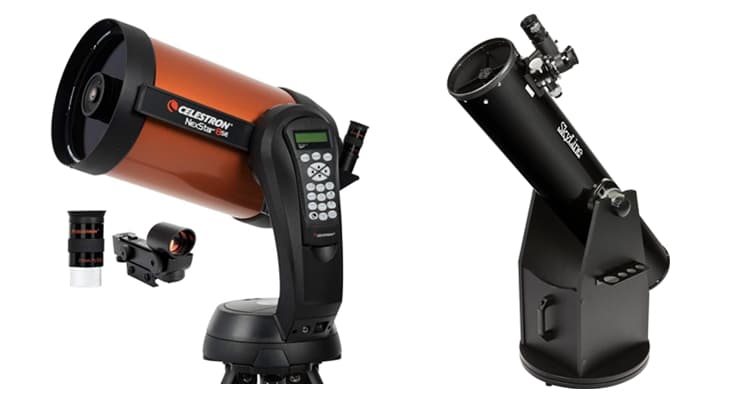When it comes to exploring the wonders of our solar system, few experiences rival the thrill of observing the planets up close through a telescope. From the gaseous giants like Jupiter and Saturn to the rocky terrain of Mars and Venus, each planet offers a unique glimpse into the vastness of space. But how do you choose the right telescope to see these celestial bodies in all their glory?
In this article, we’ll explore the factors to consider when selecting a telescope for planet viewing and provide recommendations for aspiring astronomers.
Understanding Telescope Specifications
Before diving into telescope selection, it’s essential to understand the key specifications that determine a telescope’s suitability for planet viewing:
1. Aperture: The aperture of a telescope refers to the diameter of its primary mirror or lens. Larger apertures gather more light, allowing for brighter and clearer views of celestial objects. When it comes to planet viewing, a telescope with a larger aperture is preferable, as it provides greater detail and resolution.
2. Focal Length: The focal length of a telescope determines its magnification capabilities. Telescopes with longer focal lengths provide higher magnification, allowing for closer views of distant objects like planets. However, higher magnification also means a narrower field of view, making it more challenging to locate and track objects.
3. Magnification: While magnification is often a primary consideration for planet viewing, it’s important to note that excessively high magnification can result in blurry or distorted images, particularly in atmospheric turbulence. A general rule of thumb is to use magnifications of around 50x to 100x per inch of aperture for optimal planet viewing.
Choosing the Right Telescope Type
When selecting a telescope for planet viewing, several types are suitable for the task:
1. Refractor Telescopes: Refractor telescopes use lenses to gather and focus light, providing crisp and clear views of celestial objects. They are well-suited for planet viewing, particularly for beginners, due to their low maintenance and ease of use.
2. Reflecting Telescopes: Reflecting telescopes utilize mirrors to gather and focus light, offering excellent light-gathering capabilities at a lower cost compared to refractors. They are also suitable for planet viewing, with larger aperture models providing superior detail and resolution.
3. Compound Telescopes: Compound telescopes, such as Schmidt-Cassegrain and Maksutov-Cassegrain designs, combine elements of refractor and reflector telescopes to offer a compact and versatile viewing experience. They are ideal for planet viewing, with high-quality optics and moderate focal lengths.
Recommended Telescopes for Planet Viewing
1. Celestron NexStar 8SE: The Celestron NexStar 8SE is a popular choice among amateur astronomers for its impressive light-gathering capabilities and user-friendly design. With an 8-inch aperture and computerized tracking system, it offers stunning views of the planets and other celestial objects.
2. Orion SkyQuest XT8 Dobsonian Telescope: The Orion SkyQuest XT8 Dobsonian Telescope features an 8-inch aperture and a simple yet sturdy Dobsonian mount, making it an excellent choice for planet viewing. Its large aperture provides bright and detailed views of the planets and deep-sky objects alike.
3. Meade Instruments ETX125 Observer Telescope: The Meade Instruments ETX125 Observer Telescope combines a compact design with high-quality optics, making it ideal for planet viewing on the go. With a 5-inch aperture and built-in computerized tracking, it offers excellent performance and portability.
Conclusion
In conclusion, selecting the right telescope for planet viewing requires careful consideration of aperture, focal length, and magnification capabilities.
By choosing a telescope with a large aperture, moderate focal length, and high-quality optics, aspiring astronomers can enjoy stunning views of the planets with clarity and precision. Whether observing the rings of Saturn, the cloud bands of Jupiter, or the rugged terrain of Mars, a well-chosen telescope opens up a world of exploration and discovery in the night sky.
So, grab your telescope, head outside, and prepare to embark on an unforgettable journey through our solar system’s celestial wonders.





